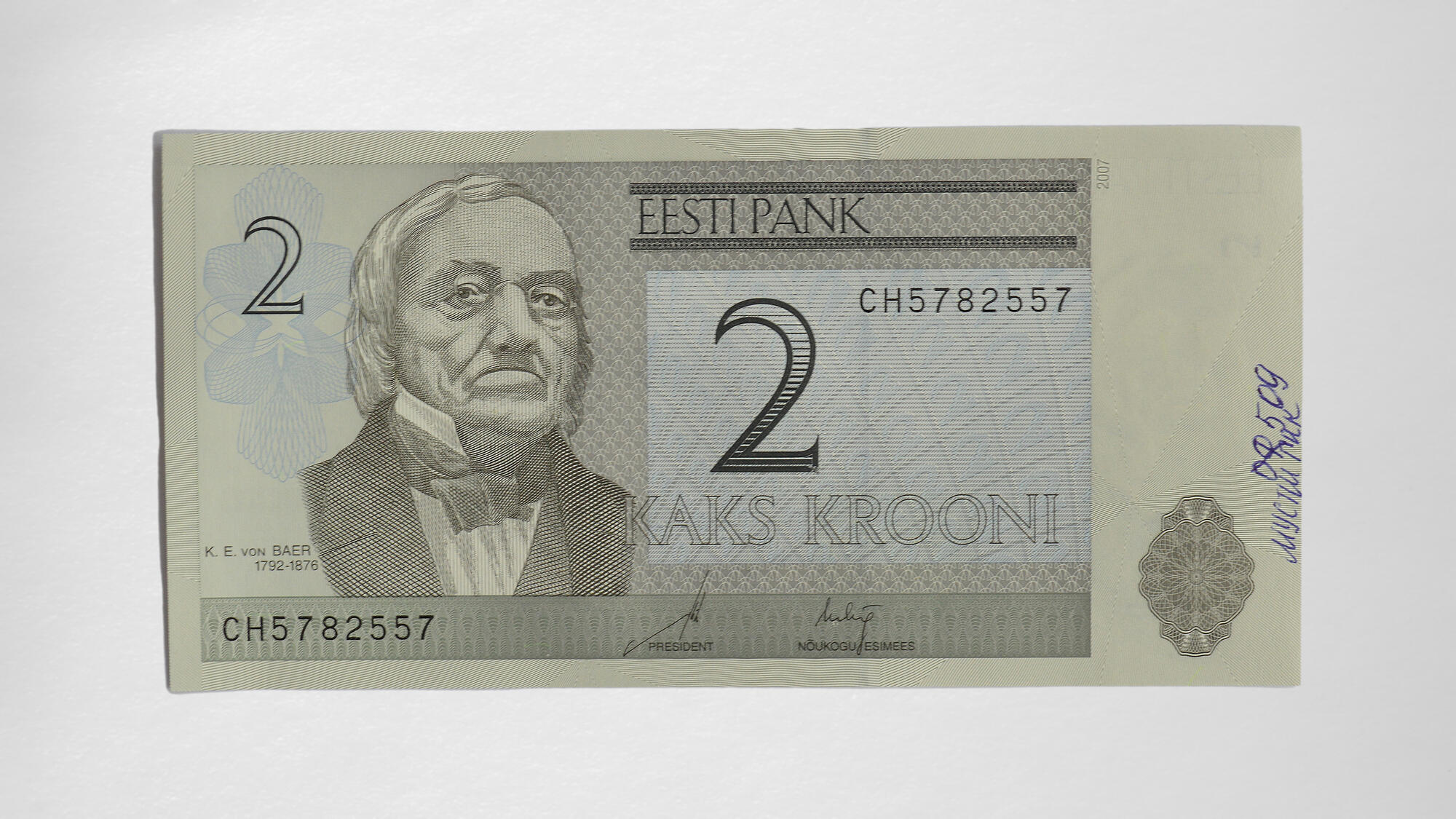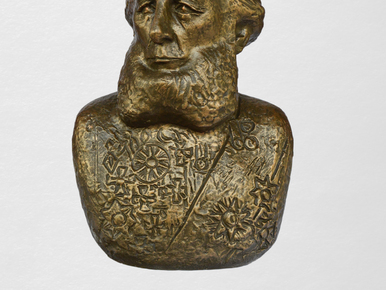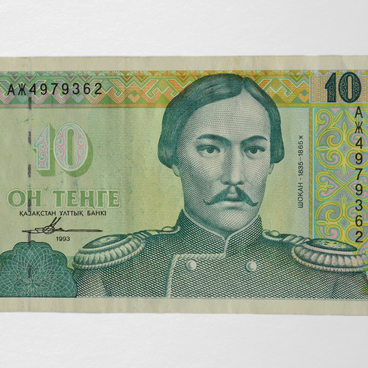The museum’s collection includes a 2-krooni banknote with a portrait of one of the founders of the Russian Geographic Society, Karl Baer. The back side of the bill depicts the building of the University of Tartu. Karl von Baer was an outstanding geographer, traveler, anthropologist, and explorer. From 1835 to 1862 he was head of the Second Branch of the Library of the Imperial Academy of Sciences.
The scientist was born in Estlandia — the former name for the northern part of Estonia. He worked in Austria and Germany. In 1829 Baer was first invited to the St. Petersburg Academy of Sciences and moved to the Russian capital. Baer’s most valuable scientific discovery is considered to be the study of the mammalian ovum and the study of the similarities and differences between embryos in different animals.
In the summer of 1837 he made a trip to Novaya Zemlya, which none of the naturalists had visited before him. Two years later, Baer explored the islands of the Gulf of Finland, and in 1840 he visited the Kola Peninsula. At the same time, he began to publish a special journal at the Academy called ‘Materials for the Knowledge of the Russian Empire’.
Also, Baer was one of the founding fathers of the Imperial Russian Geographic Society, which was established in 1845. Geographer Pyotr Semyonov-Tyan-Shansky wrote that the idea ‘to gather and direct the best young forces for a comprehensive study of the native land, found sympathy in four circles’ — sailors, officers, academicians and scientists.
The scientist was born in Estlandia — the former name for the northern part of Estonia. He worked in Austria and Germany. In 1829 Baer was first invited to the St. Petersburg Academy of Sciences and moved to the Russian capital. Baer’s most valuable scientific discovery is considered to be the study of the mammalian ovum and the study of the similarities and differences between embryos in different animals.
In the summer of 1837 he made a trip to Novaya Zemlya, which none of the naturalists had visited before him. Two years later, Baer explored the islands of the Gulf of Finland, and in 1840 he visited the Kola Peninsula. At the same time, he began to publish a special journal at the Academy called ‘Materials for the Knowledge of the Russian Empire’.
Also, Baer was one of the founding fathers of the Imperial Russian Geographic Society, which was established in 1845. Geographer Pyotr Semyonov-Tyan-Shansky wrote that the idea ‘to gather and direct the best young forces for a comprehensive study of the native land, found sympathy in four circles’ — sailors, officers, academicians and scientists.



